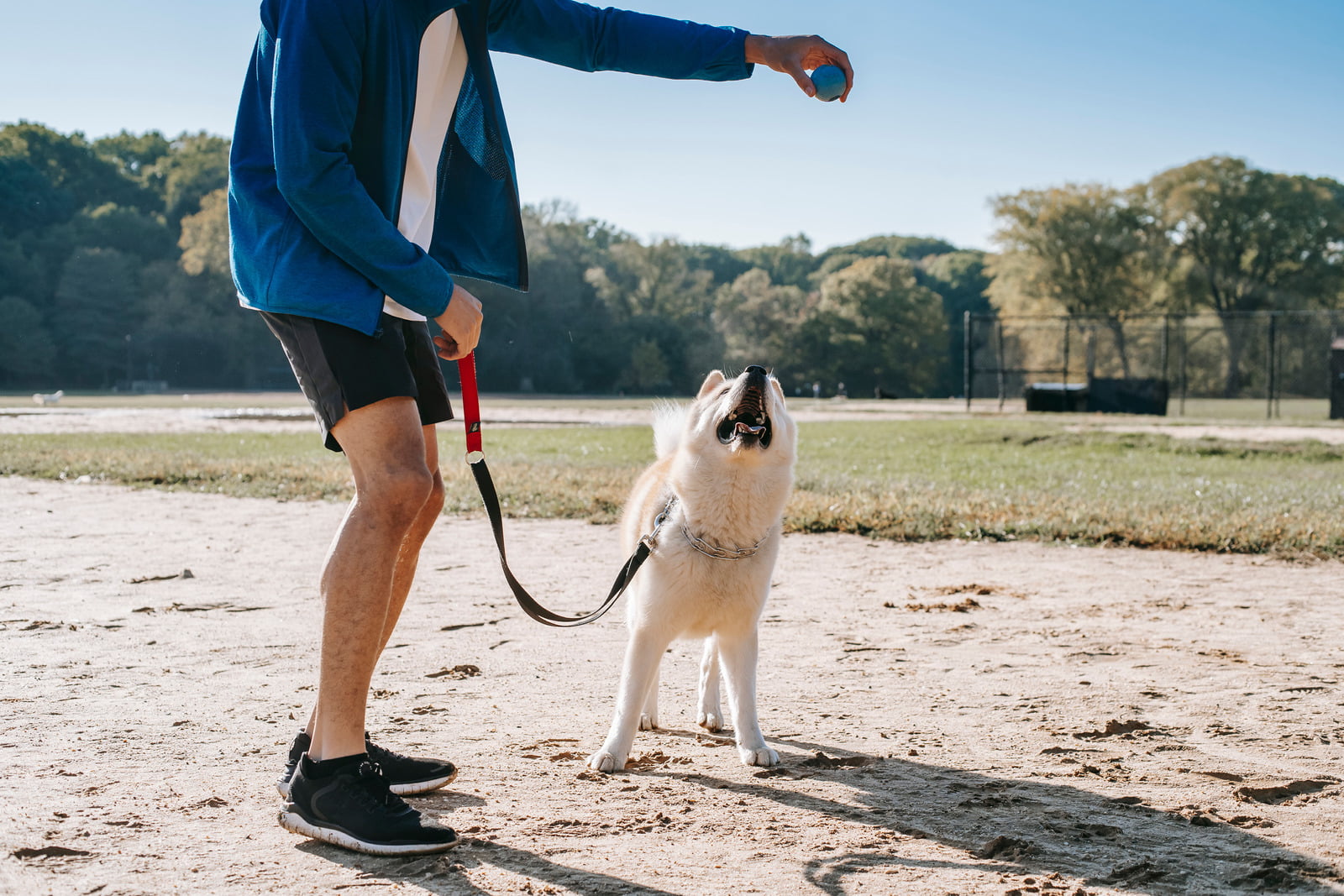Does belly bands help train dogs from marking? Marking behaviors in dogs, especially male dogs, can be quite challenging for pet owners to deal with. Whether it’s in the home or during walks, the act of marking can be frustrating and difficult to control.
Fortunately, there are solutions available to help address this issue, including the use of belly bands. In this article, we will explore the effectiveness of using belly bands as a training tool for preventing dogs from marking and provide valuable insights into their benefits and potential drawbacks.
Understanding the issue of marking in dogs is crucial in finding effective training methods to address this behavior. Marking is a natural instinct for dogs, especially male ones, as a means of scent communication and territorial marking. However, when this behavior becomes excessive or occurs indoors, it can become a problem for pet owners. This is where belly bands come into play as a potential solution to help train dogs from marking.
In the following sections of this article, we will delve deeper into what belly bands are and how they work as training tools. We will also discuss the pros and cons of using belly bands for training and explore the behavioral aspect of whether they can effectively help in training dogs from marking. Additionally, we will provide tips for effectively using belly bands in training and outline alternative methods for addressing marking behaviors in dogs.
What Are Belly Bands and How Do They Work?
Belly bands are a type of dog diaper that wraps around the lower part of a dog’s abdomen to prevent them from urinating or marking in the house. These bands are typically made from soft and absorbent materials, such as cotton or fleece, and often have Velcro closures for easy adjustment. The bands are designed to be comfortable for the dog to wear while also effectively containing any accidents.
The way belly bands work is fairly simple. When a dog wears a belly band, it acts as a barrier to keep their urine from soiling furniture, carpets, or other areas inside the home. If the dog does have an accident, the belly band will absorb the urine and prevent it from causing damage. It is important to note that belly bands should only be used as a temporary solution while working on training your pet to stop marking inappropriately.
It’s essential for pet owners to choose the right size and fit when using belly bands. Properly fitting bands can help ensure that they stay in place and do not cause discomfort for the dog. Additionally, some belly bands come with built-in liners or space to insert disposable pads for added absorbency, making them even more effective in preventing messes around the house.
The Pros and Cons of Using Belly Bands for Training
The use of belly bands for training dogs from marking comes with its own set of advantages and disadvantages. It is important for dog owners to carefully consider these factors before deciding whether or not to use belly bands as a training tool.
One of the main advantages of using belly bands is that they are highly effective in preventing dogs from marking inside the house. Belly bands act as a physical barrier, making it uncomfortable for the dog to urinate, thus discouraging them from marking their territory indoors. Additionally, belly bands can be a useful tool in the housebreaking process for male dogs, especially when they are still learning to control their bladder.
However, there are also some drawbacks to using belly bands for training. One concern is that they may only address the symptoms of marking rather than the root cause.
While belly bands can prevent the dog from urinating indoors, they do not necessarily address any underlying behavioral issues that may be causing the marking behavior in the first place. Additionally, some dogs may become stressed or anxious when wearing a belly band, which can lead to other behavioral problems if not properly addressed.
Overall, while belly bands can be an effective tool in preventing indoor marking, it is important for dog owners to weigh the pros and cons before incorporating them into their training regimen.
| Advantages | Disadvantages |
|---|---|
| Highly effective in preventing indoor marking | May only address symptoms rather than root cause |
| Useful in housebreaking process for male dogs | Some dogs may become stressed or anxious when wearing |
The Behavioral Aspect
The use of belly bands in training dogs from marking has been a topic of interest for many pet owners and trainers. It is important to understand the behavioral aspect of how belly bands work and whether they can effectively help in training dogs from marking.
Understanding the Behavior of Marking in Dogs
Marking is a natural behavior for dogs, particularly male dogs, as a way of scent-marking their territory. When a dog feels the need to mark, they often lift their leg and urinate on vertical surfaces. This behavior can be triggered by various reasons such as anxiety, dominance, or simply a response to other animals in the vicinity.
How Belly Bands Affect the Behavior of Marking
Belly bands are designed to wrap around the dog’s midsection, covering their genital area. The pressure from the band provides sensory feedback to the dog when they attempt to mark, which can deter them from doing so. Additionally, the belly band serves as a physical barrier that prevents urine from being released onto surfaces, thereby minimizing the impact of marking.
The Effectiveness of Belly Bands in Training
While some pet owners have reported success in using belly bands to train their dogs from marking, it is important to acknowledge that every dog is unique and may respond differently to this training method. The behavioral aspect of training should also involve positive reinforcement techniques and addressing any underlying issues that may be causing the marking behavior. Consistency and patience are key factors in effectively using belly bands for training purposes.
Tips for Effectively Using Belly Bands in Training
Belly bands are a useful tool for training dogs from marking, but their effectiveness largely depends on how they are used. Here are some tips for effectively using belly bands in training:
- Proper fitting: It is important to ensure that the belly band fits your dog properly. A band that is too tight can cause discomfort, while one that is too loose may not be effective in preventing marking.
- Consistency: Consistency is key when using belly bands for training. It is important to consistently use the belly band as part of the training routine to reinforce the message that marking is not acceptable.
- Reward-based training: When your dog refrains from marking while wearing the belly band, it is important to reward them. Positive reinforcement can help encourage the desired behavior.
It’s also essential to remember that while belly bands can be helpful in training, they should not be relied upon as the sole method for addressing marking behavior in dogs. Along with using belly bands, it’s important to continue implementing other training techniques and strategies to address the underlying behavioral issues.
By following these tips and being patient and consistent with the use of belly bands, dog owners can effectively train their pets from marking behavior and achieve success in their training efforts.
Alternative Methods for Training Dogs From Marking
Positive Reinforcement Training
One alternative method for training dogs from marking is through positive reinforcement training. This type of training focuses on rewarding the dog for exhibiting the desired behavior, in this case, not marking in the house. Positive reinforcement can include treats, praise, and other rewards that motivate the dog to repeat the desired behavior.
Consistent Schedule and Routine
Another effective alternative method is maintaining a consistent schedule and routine for your dog. Dogs often mark when they feel anxious or unsure about their environment. By providing a consistent schedule for feeding, walks, and bathroom breaks, you can help reduce your dog’s anxiety and minimize their urge to mark inside the house.
Provide Ample Outdoor Opportunities
Ensuring that your dog has plenty of opportunities to relieve themselves outdoors can also help prevent marking inside the house. Take your dog for regular walks and provide access to a designated bathroom area in your yard. The more opportunities your dog has to eliminate outside, the less likely they will feel the need to mark indoors.
By implementing these alternative methods for training dogs from marking, pet owners can effectively address this behavioral issue without relying solely on belly bands. It’s important to find the approach that works best for your individual dog and be patient and consistent in your training efforts.
Real-Life Success Stories
One success story comes from Jessica, who had been struggling with her male dog marking all over the house. After consulting with a professional trainer, she decided to give belly bands a try. She was surprised by how quickly her dog responded to the belly band and stopped marking in the house. Jessica found that the belly band not only prevented her dog from leaving marks around the house but also helped in effectively training him to go outside.
Similarly, David, another pet owner, had been dealing with his female dog’s marking behavior for months. After trying various methods without success, he decided to use a belly band as a last resort. To his surprise, within just a few weeks of consistent use, his dog’s marking behavior significantly decreased and eventually stopped altogether.
These real-life success stories show that belly bands can be an effective tool in training dogs from marking. By providing an immediate deterrent and re-directing the behavior, many pet owners have found that belly bands have positively contributed to their efforts in training their dogs.
It is important to note that while belly bands may not work for every dog, these success stories highlight their potential as an effective training aid for many pet owners who are struggling with this issue.
| Success Story | Effectiveness of Belly Bands |
|---|---|
| Jessica’s Male Dog | Quickly responds to belly band, stops indoor marking |
| David’s Female Dog | Significantly decreases and eventually stops marking behavior |
Conclusion
In conclusion, using belly bands as a training tool for dogs to prevent marking can be effective, but it is not a cure-all solution. Belly bands can help manage the behavior by preventing urine marking around the house and allowing for positive reinforcement training.
They provide a temporary barrier and can aid in redirecting the dog’s behavior towards appropriate elimination areas. However, it is important to remember that belly bands should be used in conjunction with other training methods for the best results.
While belly bands have their pros, such as being a non-invasive and relatively inexpensive option for managing marking behavior, they also have their cons. Some dogs may find them uncomfortable and attempt to remove or chew them off. Additionally, some owners may rely too heavily on belly bands without addressing the underlying reasons for their dog’s marking behavior, such as territory or anxiety issues. In these cases, professional assistance from a trainer or behaviorist may be necessary.
Ultimately, the decision to use belly bands as a training tool for managing marking behavior in dogs must be made based on the individual dog’s needs and the owner’s ability to address the issue comprehensively. It is essential to consider alternative methods of training and addressing the root causes of marking behavior before relying solely on belly bands.
Consulting with a veterinarian or professional trainer can provide guidance on creating an effective training plan tailored to the specific needs of both you and your dog.
Frequently Asked Questions
Do Belly Bands Work for Marking Dogs?
Belly bands can be effective for some dogs in preventing marking behavior. They work by covering the male dog’s genital area and absorbing urine, which can help prevent marking on furniture, walls, or other objects in the house. However, it’s important to note that belly bands are not a solution for addressing the underlying reasons for marking behavior.
Do Belly Bands Stop Dogs From Peeing in the House?
Belly bands can help discourage male dogs from peeing in the house by providing a physical barrier and preventing urine from soiling areas inside. However, it’s essential to pair the use of belly bands with proper training and behavior modification to address the root cause of the problem effectively.
How Do You Train a Dog to Stop Marking?
Training a dog to stop marking involves a combination of tactics such as positive reinforcement, consistent supervision, frequent potty breaks outside, and using commands like “no” or “stop” when catching them in the act. It’s important to create a routine and provide plenty of opportunities for the dog to mark outside while also cleaning up any indoor accidents promptly with an enzymatic cleaner to remove lingering odors that may trigger further marking behavior.
Additionally, consulting with a professional dog trainer or behaviorist can provide valuable guidance on how to address marking issues effectively.

Welcome to the blog! I am a professional dog trainer and have been working with dogs for many years. In this blog, I will be discussing various topics related to dog training, including tips, tricks, and advice. I hope you find this information helpful and informative. Thanks for reading!





